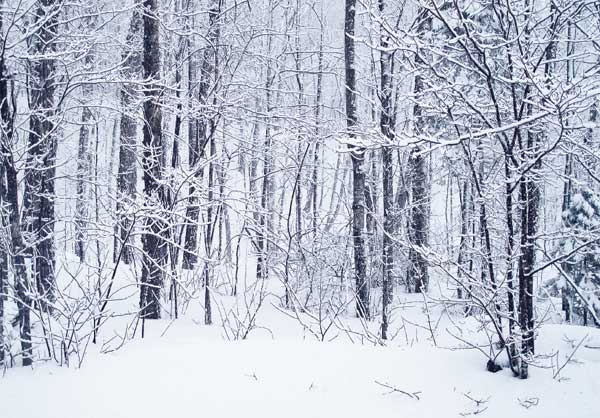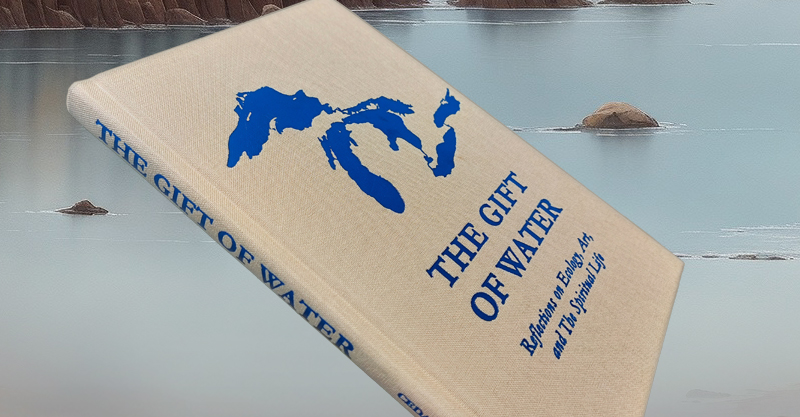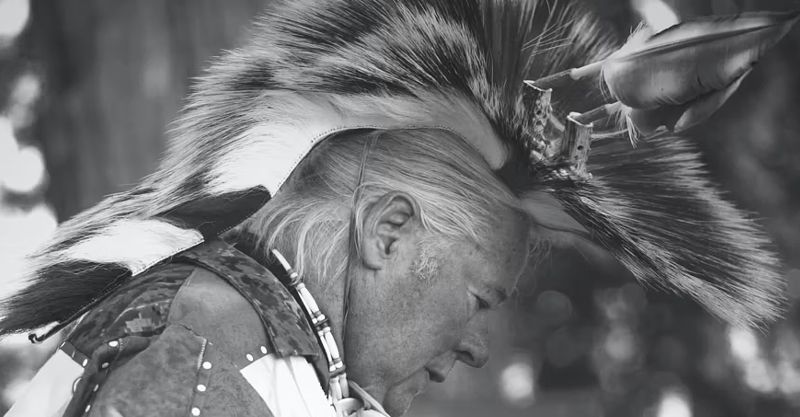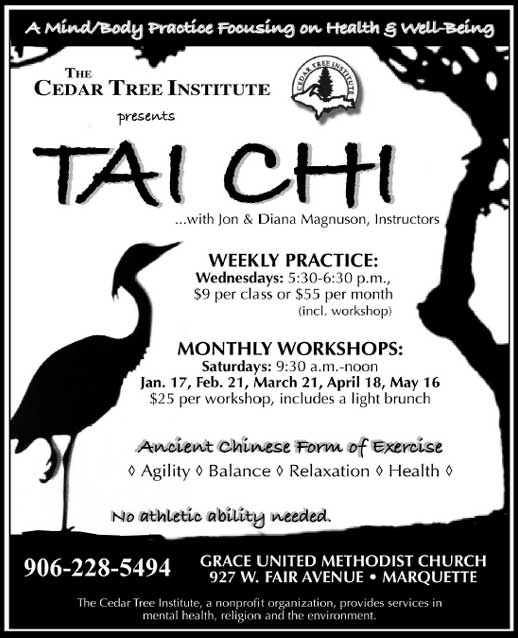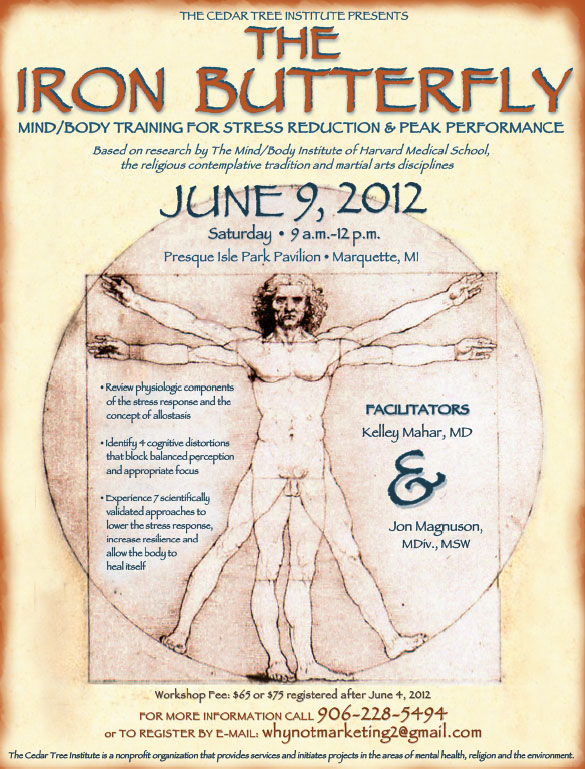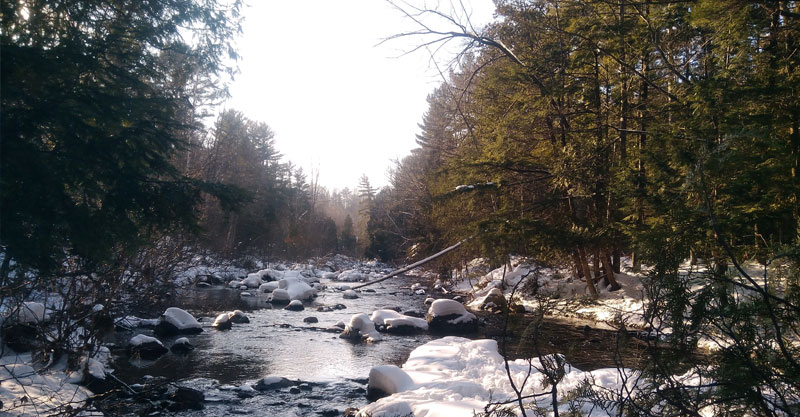from Marquette Monthly December, 2005
Native American tale offers important lessons
Early winter nights beckon the telling of tales. Darkness falls fast during these late afternoons; descriptions of storms and snow shape daily conversations about weather. We huddle down.
It remains the custom of traditional Ojibway and most other Native peoples across this wide continent that telling of certain stories is reserved for winter months. Such liturgical seasons are similarly revered in many of the world’s oldest religions.
Most of these winter stories hold entertainment value, but they also unfold, for the discerning listener, secrets about living lives of integrity, courage and meaning. Karen Armstrong, a former nun and contemporary English writer, puts it more eloquently. The telling of a good story, she said, “like a work of art, invades our being and changes it forever. It’s a transcendent encounter that tells us, in effect: ‘Change your life.’ ”
Henry Rowe Schoolcraft served as an Indian agent of the Ojibway and Ottawa tribes of Northern Michigan from 1822 through 1841. He was a naturalist, writer and one of the first avid students of the lives and lore of Native peoples of our region’s lakes and forests. In the opening words of his book Indian Legends (1839), he writes, “Much information has related rather to external customs and manners, to physical traits and historical peculiarities rather than to what might be determined philosophy of Indian peoples.”
What followed was Schoolcraft’s collection of stories recorded by memory and later by pen from his experiences at lodge ceremonies and countless winter evenings around campfires.
One such story, grounded in the traditions of the Peoples of the Three Fires (the Ojibway, Ottawa and Potawatomi) is the legend of the Moccasin Flower, sometime later called the Lady’s Slipper or in the language of the Ojibway ma-ki-sin-waa-big-waan.
“Many winters ago, on the shores of the Great Lake lived a young Ojibway maiden who adored her older brother…The tribe gave him the task of messenger for the village. He taught his sister his skills, but never took her with him when he ran to other villages to relay news.”
Joseph Campbell, mythologist and historian, reminds us that themes of the undervalued young man or woman, the ugly duckling or, in this case, a left-behind sibling, is a common motif in great sagas and stories found around the world. Campbell said there’s plenty of psychological evidence that suggests an element of our individual psyches, part of our own unending evolution, always cries out to be heard and honored. Why else, he asks, do we love the underdog?
Collectively, we live out a similar reality in communal ways. Life in most of the Upper Peninsula is marked by relative isolation and economic hardship. Battles in Lansing over state politics and funding for the fifteen counties of our region is an ongoing drama, itself one of legend. There’s always a smile or two in local cafés or taverns when we discover maps of Michigan still are being printed by downstate agencies that completely leave out the Upper Peninsula. The Ojibway story of the Moccasin Flower begins with a resonating chord. The legend invites a listener into the promise of an adventure, toward better balance, into some integration of that which has not yet been acknowledged or honored.
“Others fell ill with fevers and weakness. Soon everyone was struck. When more villagers sickened, the chief had no choice. The young brave would cross the frozen lake the next morning to find and bring back medicine. But when her beloved brother became ill, his sister decided to take his place and make the dangerous journey across the frozen bay to the medicine woman’s village.”
Novelists and English teachers tell us the idea of “a call” or “vocare” in Latin, is a basic component for a good story line. It’s also a fundamental, necessary element in a life of authenticity. A good portion of my own professional life is taken up assisting young people in sorting out the different voices that beckon them to what one of my community’s insightful prayers calls “ventures of which we cannot see the ending.” For some, I’ve found, this call becomes clear, early in life. More often, there’s a “long wandering,” as the poet Robert Bly puts it.
There’s a mystical element that sometimes weaves its way into reflections on this sensitive, very personal puzzle. Dag Hammerskjold, former secretary general of the United Nations, wrote in a personal journal before his life ended in a plane crash in 1961, “I sometimes think that all of life is finally only a preparation for the one single moment when we become fully all we are intended to be…and that will be enough.”
On the day of his death, Hammerskjold was on his way to negotiate a cease-fire in Rhodesia
If we were to explore this matter even more deeply, for the majority of people, life probably is a matter of a succession of calls. To live with that realization is to recognize our need for ongoing attentive listening, being ready anytime at any moment to step forward—again and again.
Thanks to the onslaught of media and celebrity bombardment, the calls we follow, if we’re honest, frequently are not our own, but our parents, our need for approval, the lure of high financial status. Guides and mentors can be helpful at these important junctures of life’s decision-making. And sometimes, the Legend of the Lady’s Slipper reminds us, the very best that’s brought forth from within us takes nothing less than a crisis.
“She put the pouch of medicine around her neck and slipped down to the lakeshore. She sank deeply into the snow with each step. When the maiden reached the opposite shore, she was free of the deepest snow, but her moccasins were missing. Her feet were red and raw and her footprints marked by blood.”
M. Scott Peck, best-selling author and psychiatrist attributed the success of his award-winning book The Road Less Traveled (1988) with his choice of the book’s opening sentence, “Life is difficult.”
The legend’s description of the snowstorm is, on one level, a metaphor for hardship and danger. Living in the Upper Peninsula gives us a head start appreciating this truth. As I’m writing these words, the first of what will be many winter storms is moving in from the West. Those who choose to live here in this land learn to live with a severe and, in many ways, unforgiving landscape. Bugs and winds, long winters, and a Lake Superior ferocity that shuts down shipping lanes for months, are all reminders.
In a rugged landscape as ours, this place we call home can be a builder of character. It invites, as the Legend of the Moccasin Flower suggests, a certain courage for living. Not long ago, I was involved in training a group of hospice workers in the Keweenaw Peninsula. Most of the conversation did not revolve, as one might suspect, around medications and pain control, but how to deal with dogs and maintain cars in the long bitter winters while making home visits to remote cabins. What I already knew was these workers, like many in the caring professions, remain undervalued and underpaid for their work. What I discovered that afternoon was that strong hearts are as important as nursing skills when providing end-of-life care at the end of gravel roads.
Some suggest that courage is a gift, perceived by others from the outside. Those who exhibit it so often seem unaware of their sacrifice or the nobility of character involved.
Others would say it’s a conscious heart-felt decision. I know in my own life it’s been both. But, in truth, there have been more times than not when I have not spoken, not acted when I should have. The Lady’s Slipper legend encourages us to do better, to take the high road. Sometimes against all odds.
“The medicine she carried back saved her village…..Early the next spring, the maiden and her brother searched the woods and lakeshore for her moccasins. Instead they found beautiful pink and white flowers shaped just like moccasins. There was one for every drop of blood that had fallen from the maiden’s feet on her journey to bring medicine home from the other side of the lake.
The Lady’s Slipper legend concludes, as many Native American tales do, with a specific reference to nature, a flower, a tree, a plant or animal. Such connections once served as daily reminders for Native people, promises that acts of courage and compassion on behalf of community have a legacy far beyond the time and place where and when such events may have occurred first.
Here in Marquette, in the old historic home where my family and I have lived these past ten years, a visitor can find three sets of moccasins. One pair, sewn from elk hide, is from the Blackfoot Reservation in Montana Another is made of moose hide by Cree people on the North Shore of Lake Superior. The third pair is made of seal skin and wolf fur, sewn together with dental floss by an Innupiat woman in the tiny village of Shismareff (Alaska). Each set has its own story, each a tale to tell of how it came to this place on Michigan Street. But there is a recollection of one pair of moccasins that is etched forever in my memory.
Once, while living and working in the Pacific Northwest during an early spring, I was invited to a ceremony led by Native Americans in the federal prison at Walla Walla (Washington). I remember the shadow of guard towers, the circle of fifteen or twenty Native American inmates sitting in the open yard. We were gathered to listen to a traditional healer from the Yakima Indian Nation. When first entering the facility, I passed by the security desk where designated visitors were asked to empty their pockets. By my side was an attorney, who I’d met only moments before. Later, I discovered she’d grown up on the Nez Pierce Reservation near Spokane.
As we were escorted through a series of heavy, steel-plated locked doors, she asked the guard if she could change her shoes. He nodded permission. She sat down on a bench, reached into her purse and pulled out a pair of worn, beaded moccasins.
For a moment, she held them quietly, then slipped them on her feet. They were, that day, a gentle bridge of the sacred into a far-off forgotten place behind barbed wire and stone walls. A connection, simple and humble, to a deeper spiritual world of dignity, self-worth and hope.
During the coming Michigan spring, sometime in late May or early June, from the forest floor will come the tiny shoot of the ma-ki-sin-waa-big-waan. It will carry, for those who choose to listen, a reminder of an old Ojibway tale, a story of a young woman’s courage, compassion and sacrifice on behalf of her community. One that in its telling will, perhaps one day, help us all come home.
– Jon Magnuson
December 2005
The Legend
Many winters ago, on the shores of the Great Lake, lived a young Ojibway maiden who adored her older brother.
He was the best at everything young braves should know. He tracked forest creatures and mimicked their calls. He was swift and silent in the woods and swam like an otter. The tribe gave him the task of messenger for the village. He taught his sister his skills, but never took her with him when he raced to other villages to relay news.
One winter day, an old woman in the girl’s village became sick. The next day, several others fell ill with fevers and weakness. Soon every wigwam was struck. The elders worried, but no one knew what to do. In the village across the bay, there lived a woman skilled in healing with herbs, but the snow was deep and fierce winds were raging. The head of the village hesitated to send the maiden’s brother to the medicine woman. When more and more villagers sickened, the chief had no choice. The young brave would cross the lake the next morning.
Late that night, the young man became ill. The young maiden was frantic. With her grandmother, father and mother, many of her friends and now her beloved brother failing, she decided to take his place and make the dangerous journey across the bay to the medicine woman’s village.
The dark of the winter dawn made the frigid air seem harsher. The young girl slipped out of her family’s wigwam dressed in her warmest parka, leggings and the fur-lined moccasins that her mother and grandmother had sewn. Head down so the fur of her parka protected her face from the stinging cold and wind, she walked quickly through the deepening snow to the lakeshore.
Through the blowing snow she could see the faint lights of campfires in the medicine woman’s village across the ice-covered bay. Scrambling over the slippery pack ice, the maiden lightly danced across the frozen lake, trying not to listen to the cracking and sighing of the ice beneath her feet.
The villagers welcomed her hours later when she reached the other side of the bay. Wrapped in warm, beaver robes and fed, the maiden told her story. The medicine woman gathered her herbs. Nearly asleep, the maiden insisted that she begin the return journey immediately. But the medicine woman assured her that several braves would accompany her back across the lake in the morning, once the storm broke.
When the wind stopped, the girl awoke. It was dark and still. Worrying about her family, she decided not to wait for the braves. Dressing quietly in her warm, dry clothes, she put the pouch of medicine around her neck and slipped down to the lake shore. She tried again to dance lightly again across the drifted snow. It was too deep. She sank deeply with each step. Exhausted, she lay back in the snow panting for breath. Then she remembered her brother’s lessons and the otter playing in the snow as if it were water. Slowly, letting the snow support her, she began to swim through the deep snow.
When the maiden reached the opposite shore, she was free of the deepest snow, but her moccasins were missing. Her feet were bare and cold. Soon her feet were red and raw and her footprints marked by blood. The sharp crystals of wind blown snow cut her feet at every step.
The eastern sky was beginning to lighten by the time the girl saw the shadowy outline of her village. Calling out for help, the worn-out girl stumbled on. The villagers heard and ran to her. They carried the brave maiden home, wrapped her in warm robes and massaged her torn and bleeding feet with healing ointments. The medicine she brought saved her village.
One day early the next spring, the maiden and her brother searched the woods and the lakeshore for her moccasins. Instead they found beautiful pink and white flowers shaped just like moccasins. There was one for every drop of blood that had fallen from the maiden’s feet on her journey to bring medicine home from the other side of the lake.
The Ojibway people named the flower ma-ki-sin-waa-big-waan. We call it Lady’s Slipper. They bloom in May and June in the moist pine/ hardwood forests of Upper Michigan.
If you see one, enjoy its beauty but remember it is rare and protected.
– written by Retha Weiss
with Dancing Stones Productions

